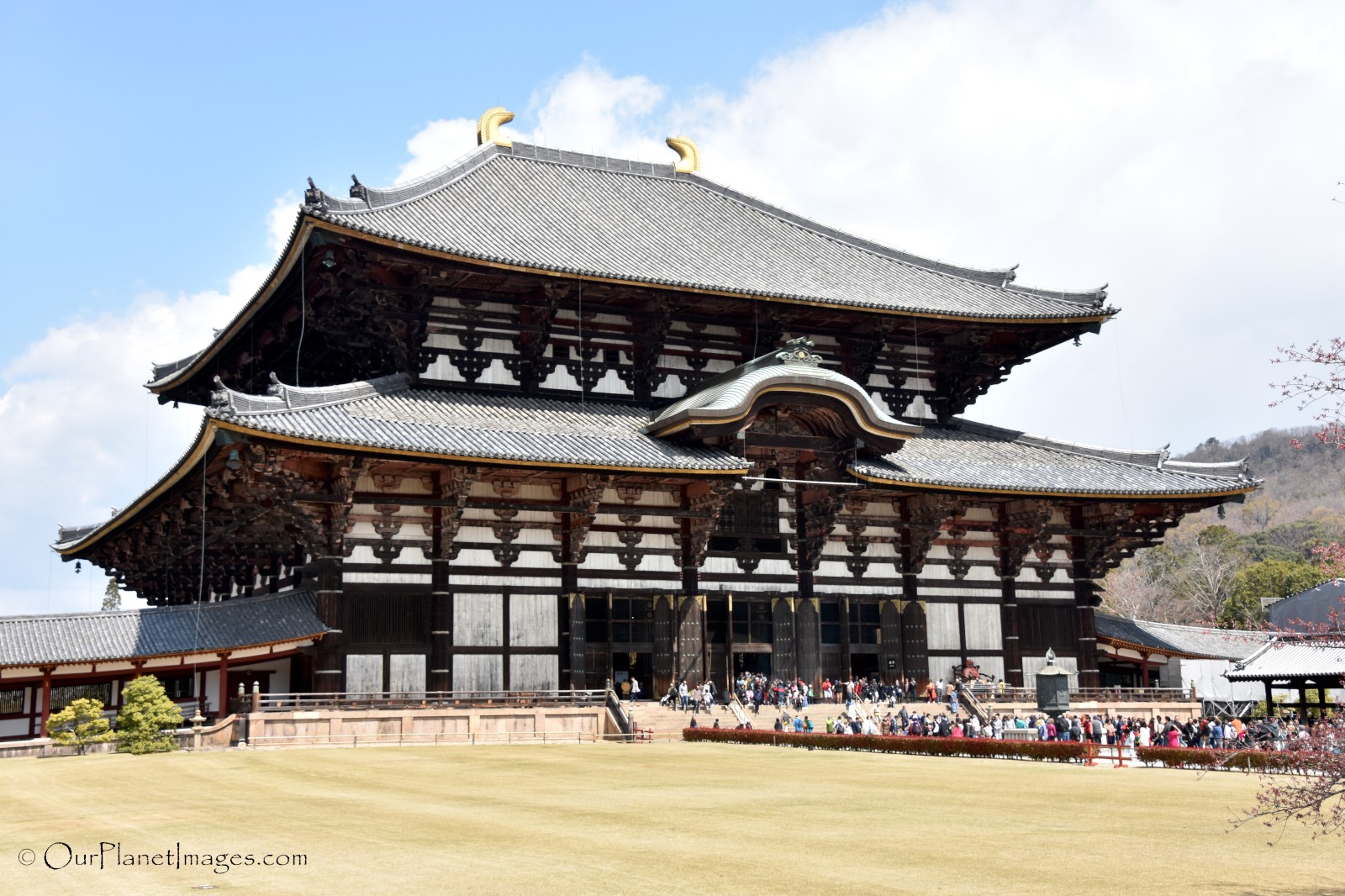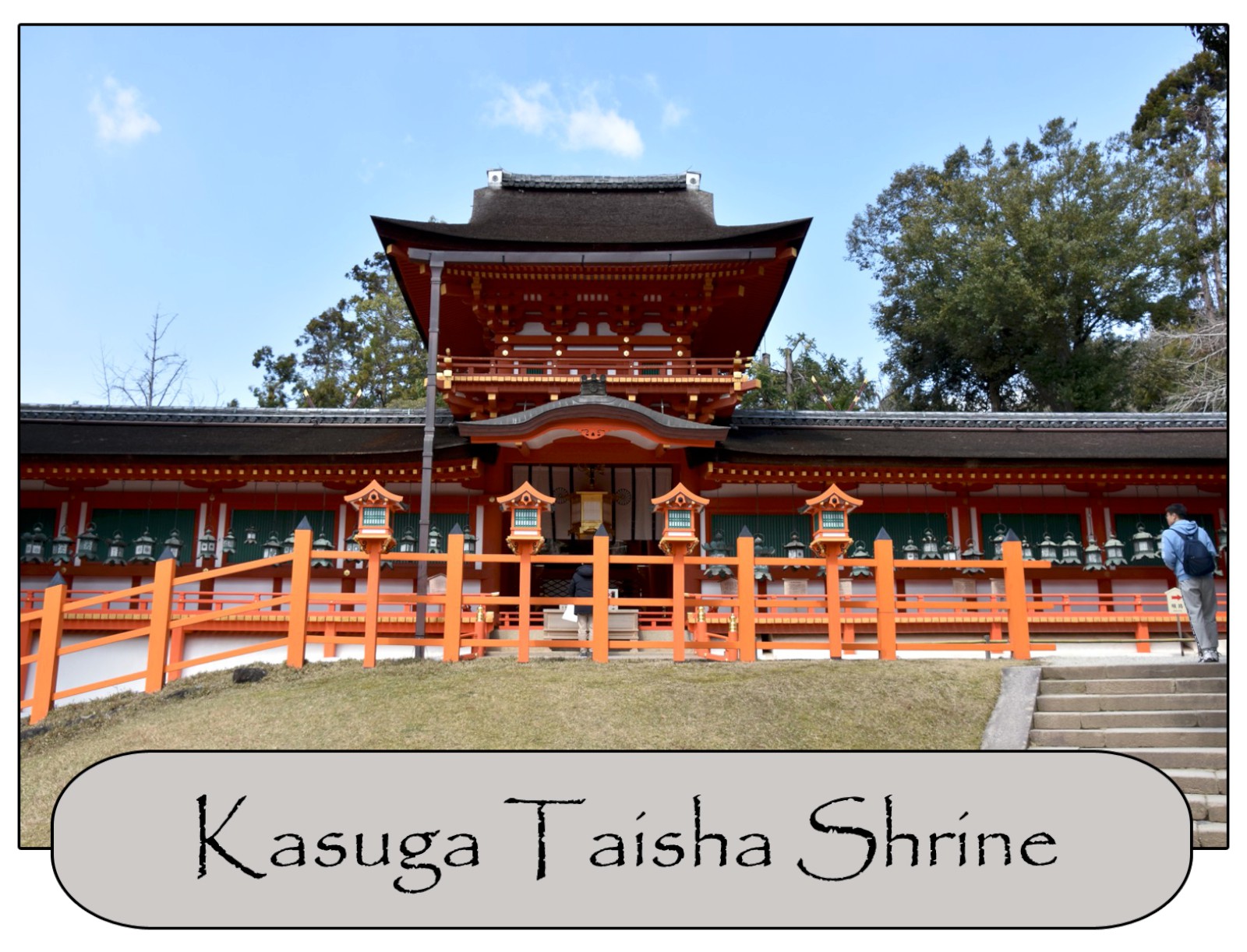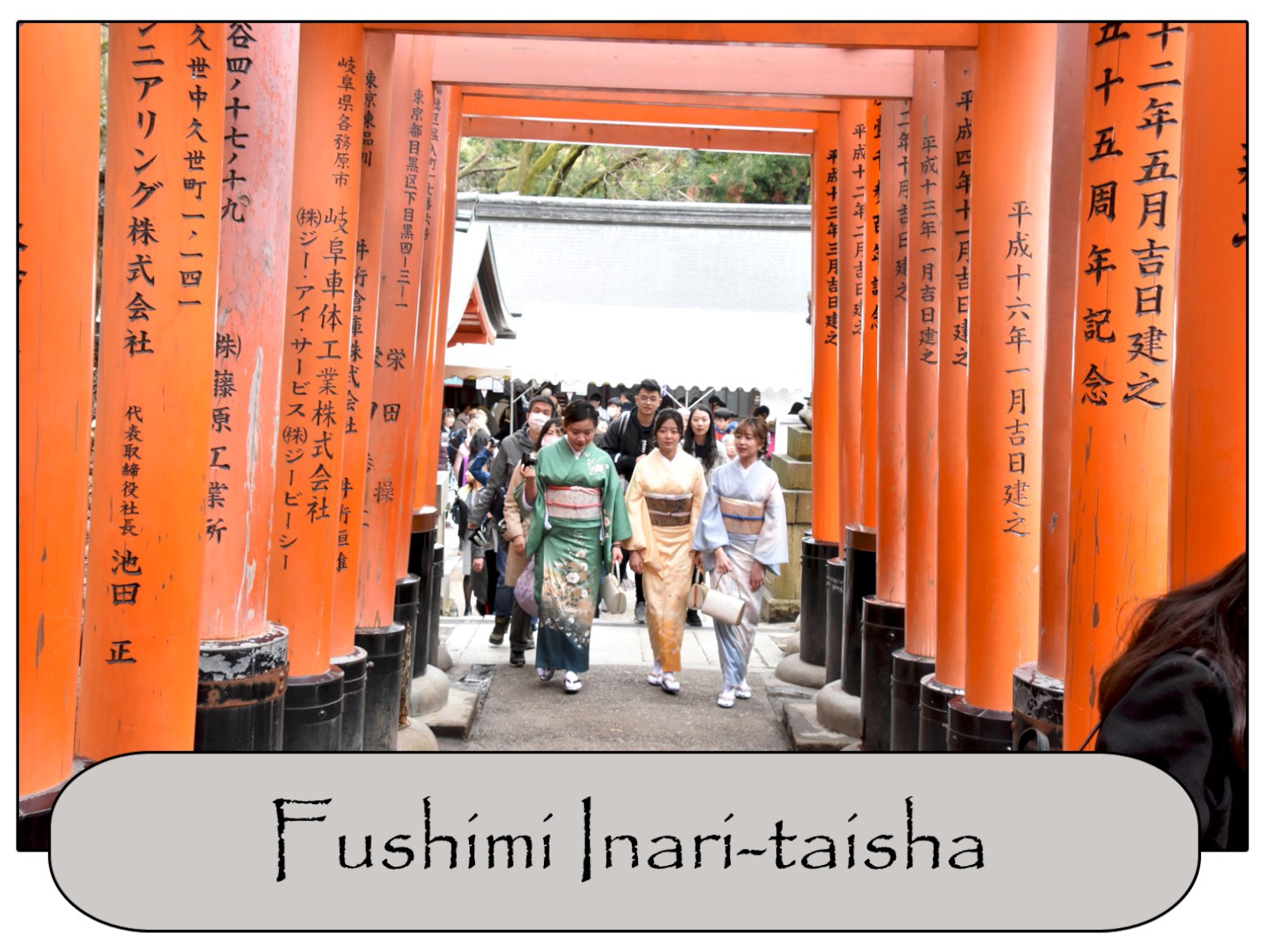Todaiji Temple is one of Japan’s most famous temples and is located in Nara Park in the city of Nara, Japan. The temple was built in 752 AD and consisted of two nine story pagodas, a lecture hall, quarters for the monks and the Great Buddha Hall.
The complex is very large with plenty of areas to explore but the main attraction for visitors is the Great Buddha Hall and it is the primary focus of this post.
Visitors to the Todaiji complex enter through the Nandaimon Gate which is a large wooden gate that was built in 1199 AD. The 25 meter high gate has a two tiered roof with two large wooden sculptures that visitors pass between as they enter the complex.

The courtyard in front of the Great Buddha Hall is enclosed by a wall with a covered walkway on the inside. Entrance into the courtyard is through the Middle Gate. The middle gate is similar color to the other temple complexes that I visited in Japan and is built in the same style.

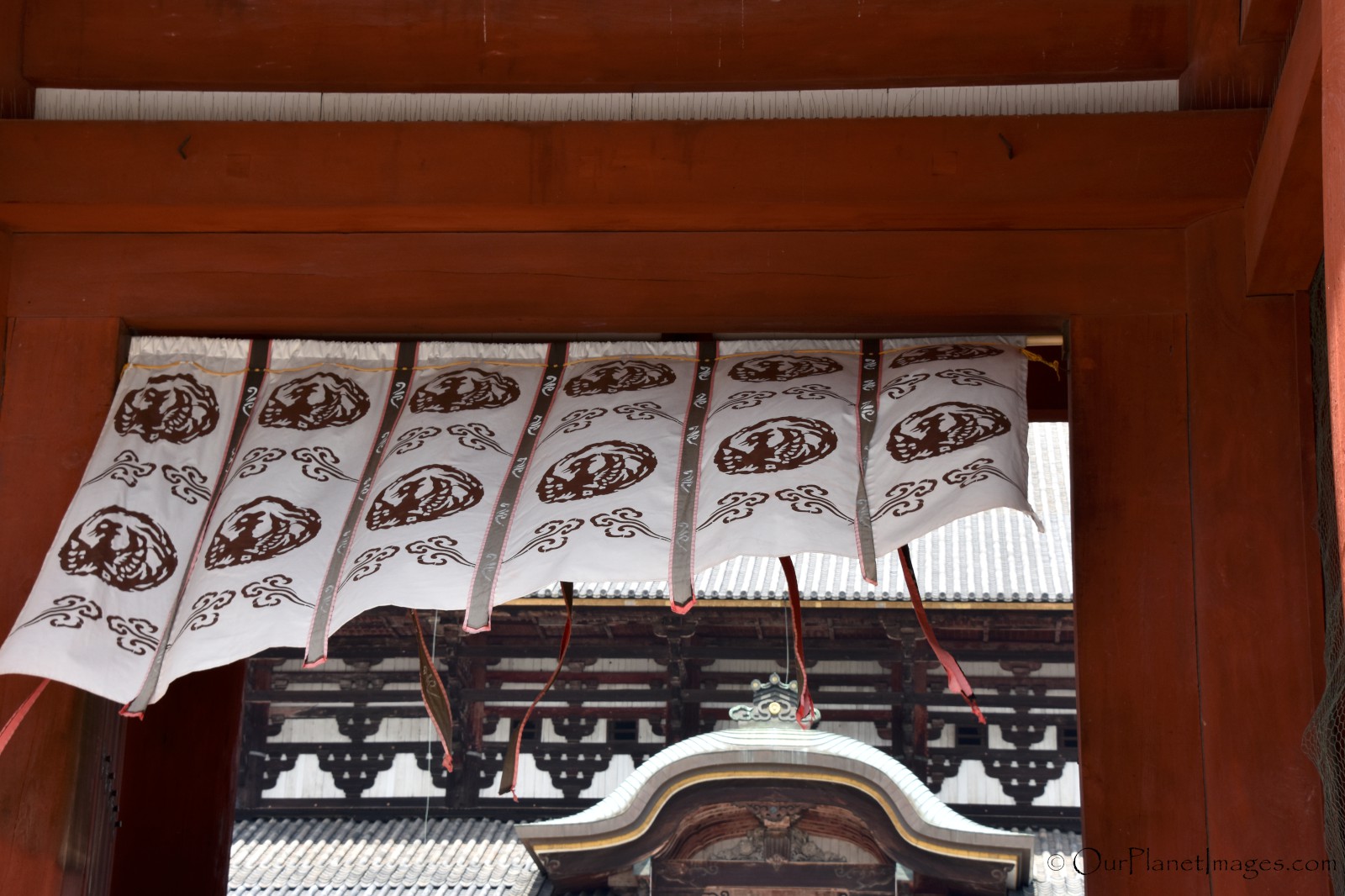
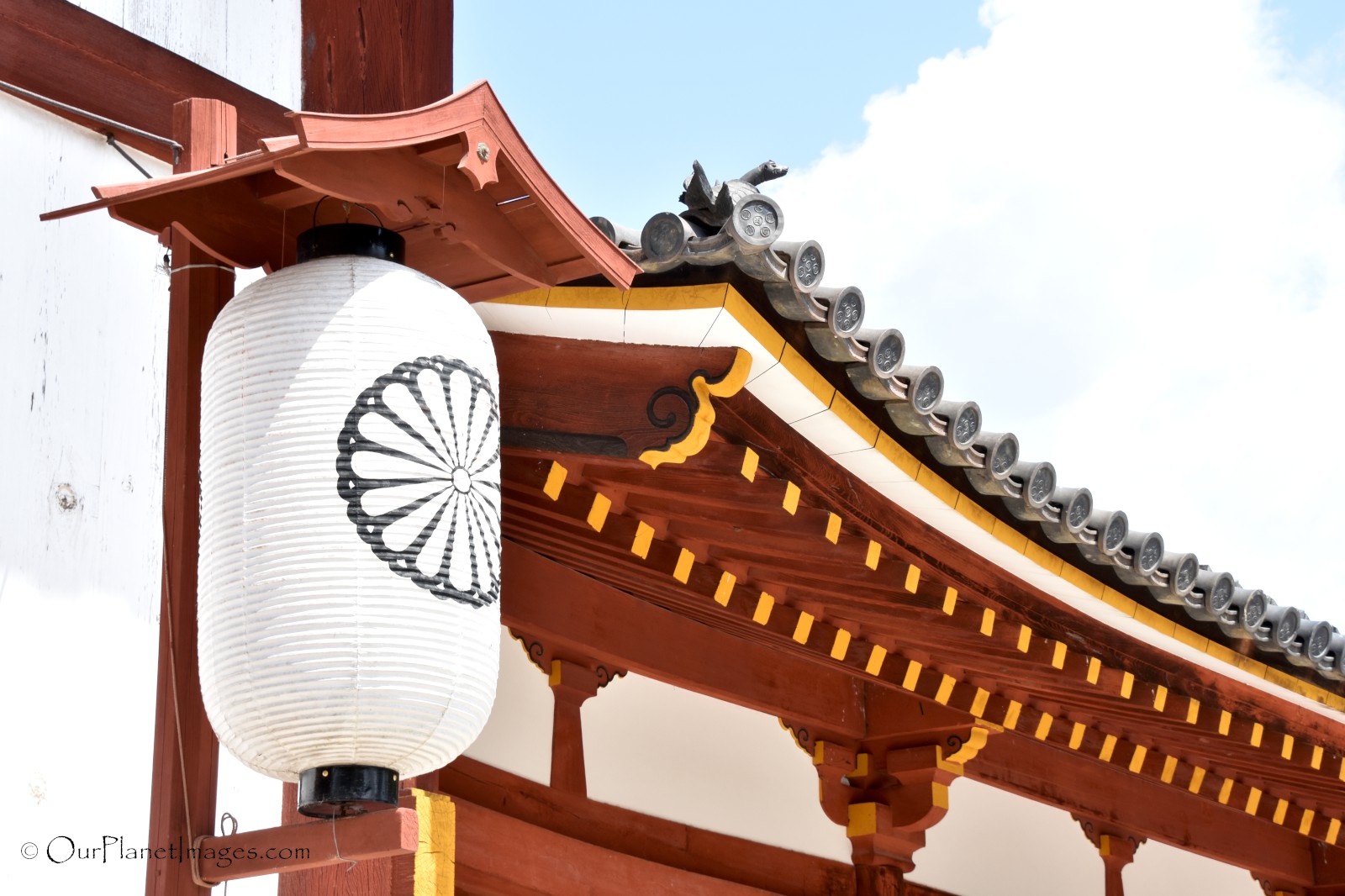
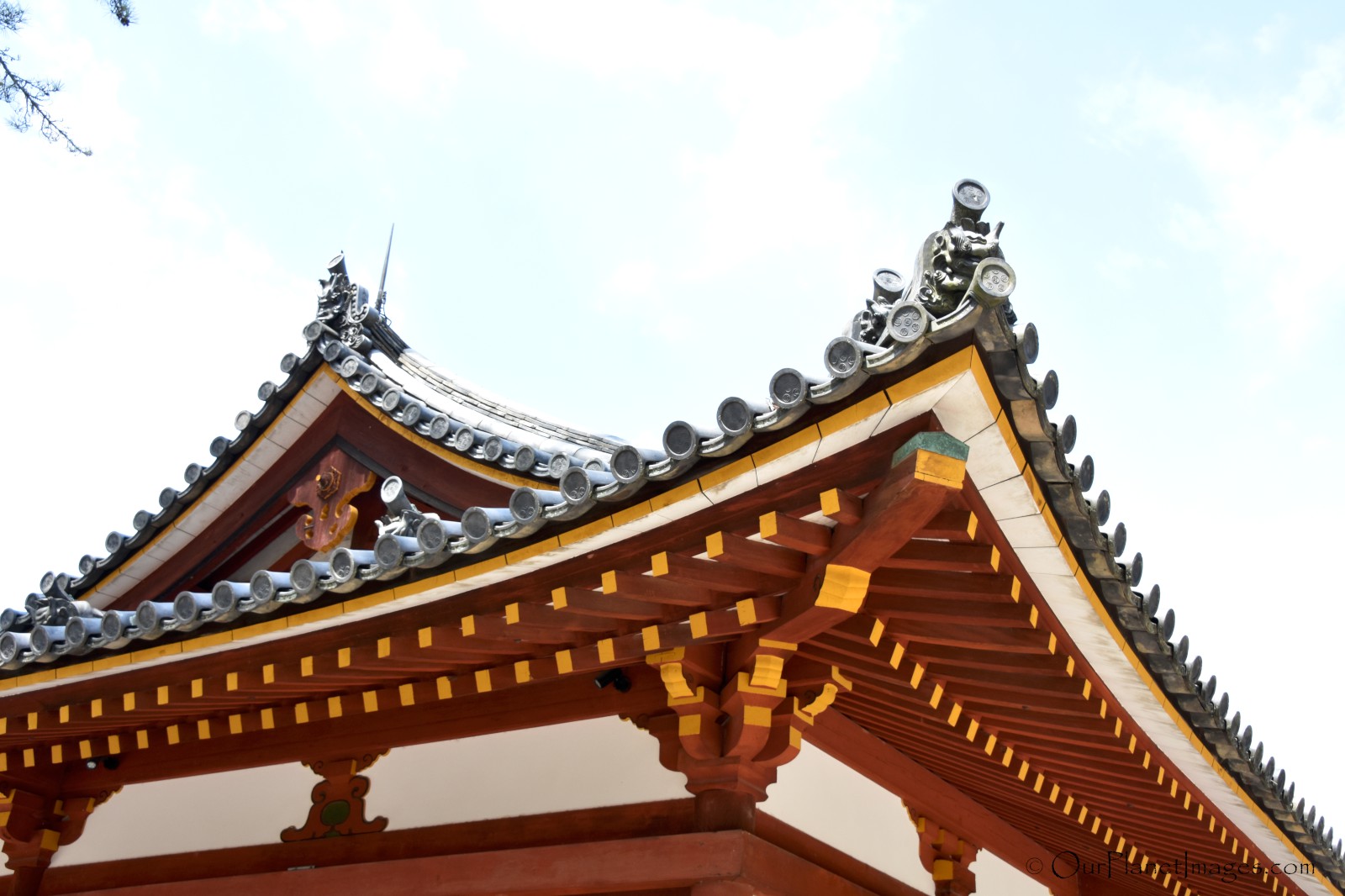
The Great Buddha Hall was originally completed in 752 AD to house the massive seated Buddha as the center piece of the building. The hall’s original dimensions measured 86 meters (282 ft.) wide by 50 meters (164 ft.) deep and 48 meters (157.5 ft.) tall.
The current hall was rebuilt in 1692 is smaller than the previous building but it is still large enough to be the world’s largest wooden building. The existing hall’s dimensions are 57 meters (187 ft.) wide with the same size width and height making is approximately two thirds (2/3) of the original temple hall’s size.
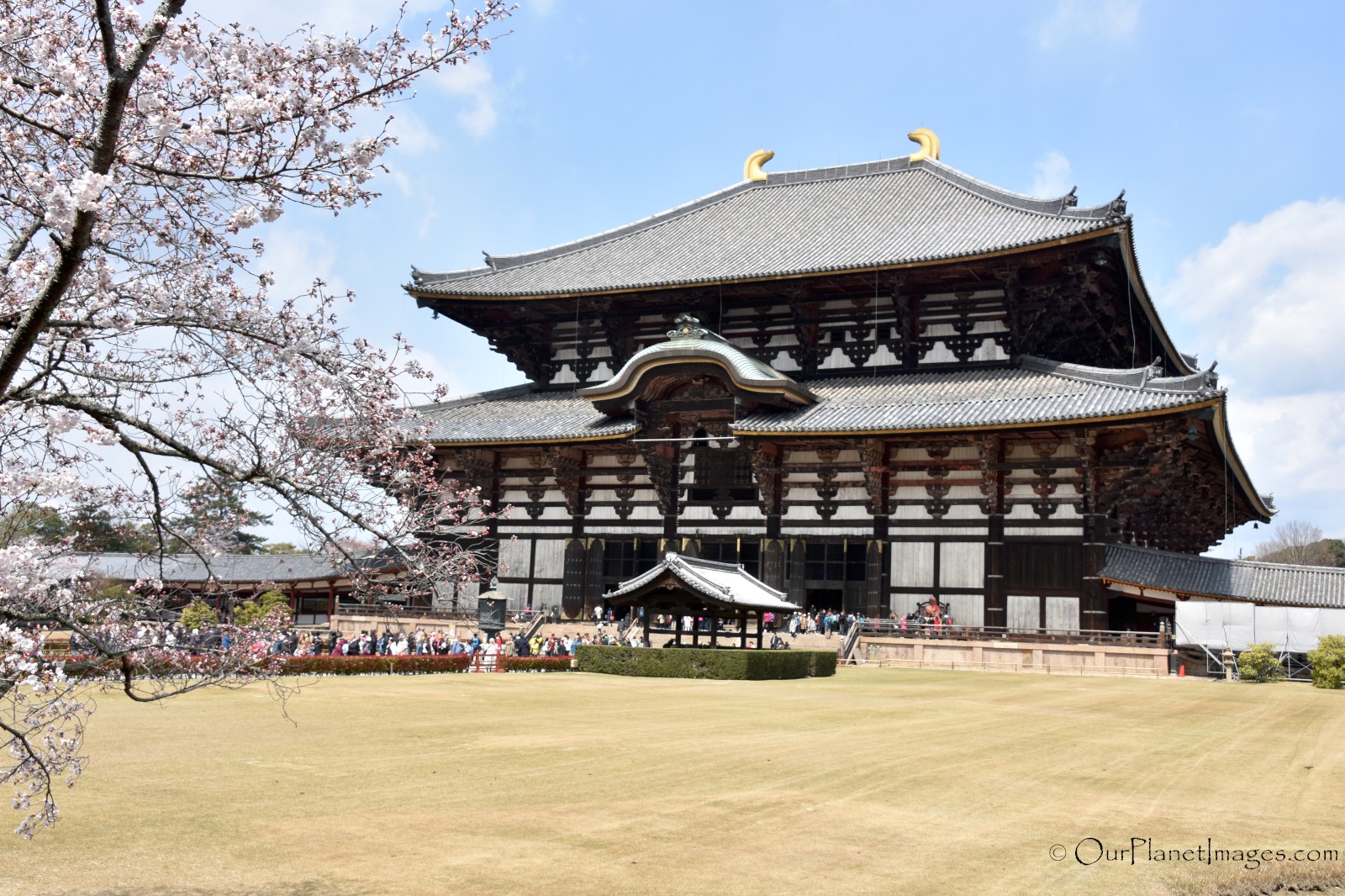
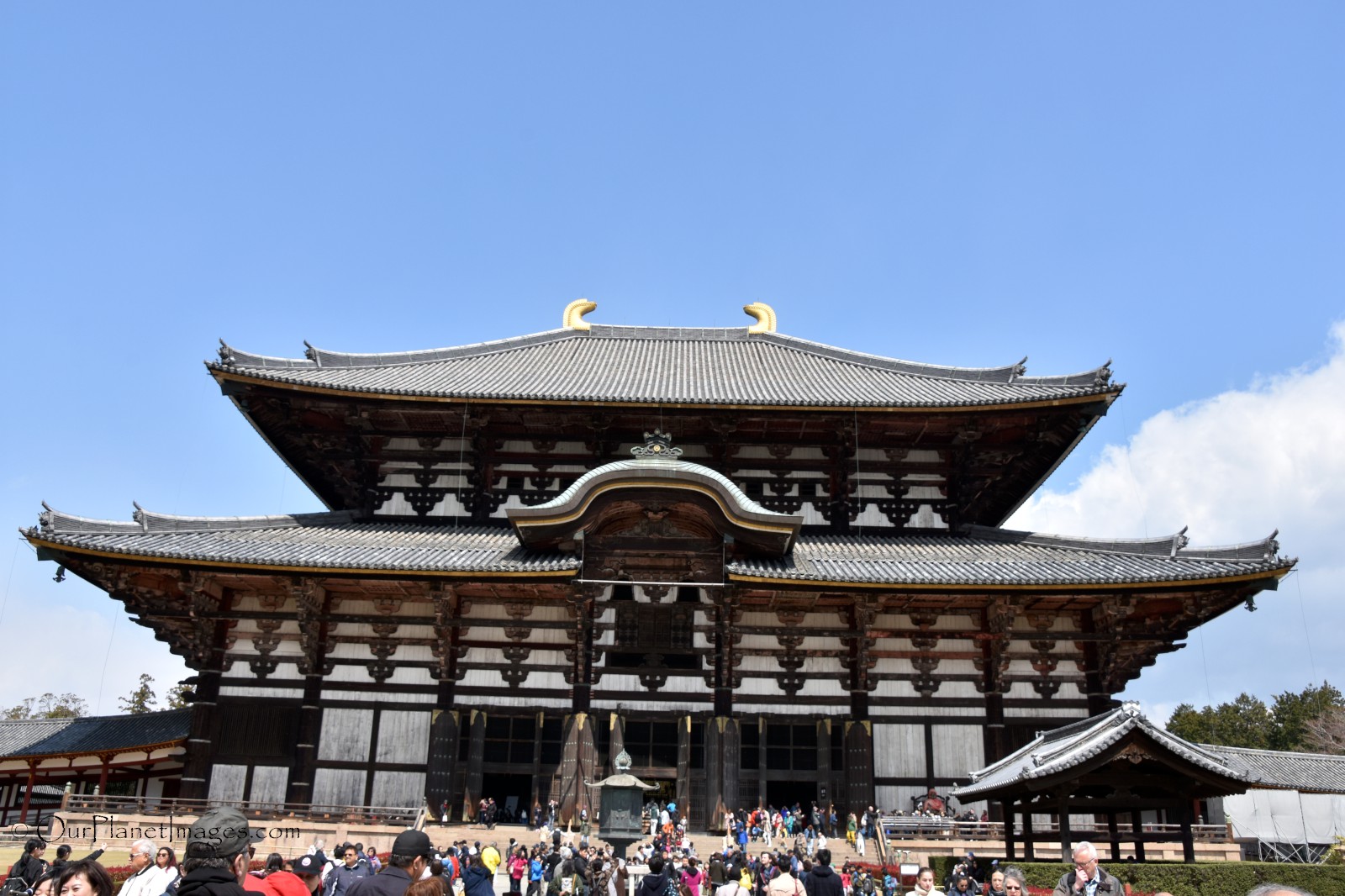
The Great Buddha Hall has several interesting features on the exterior that are shown in the photos below.
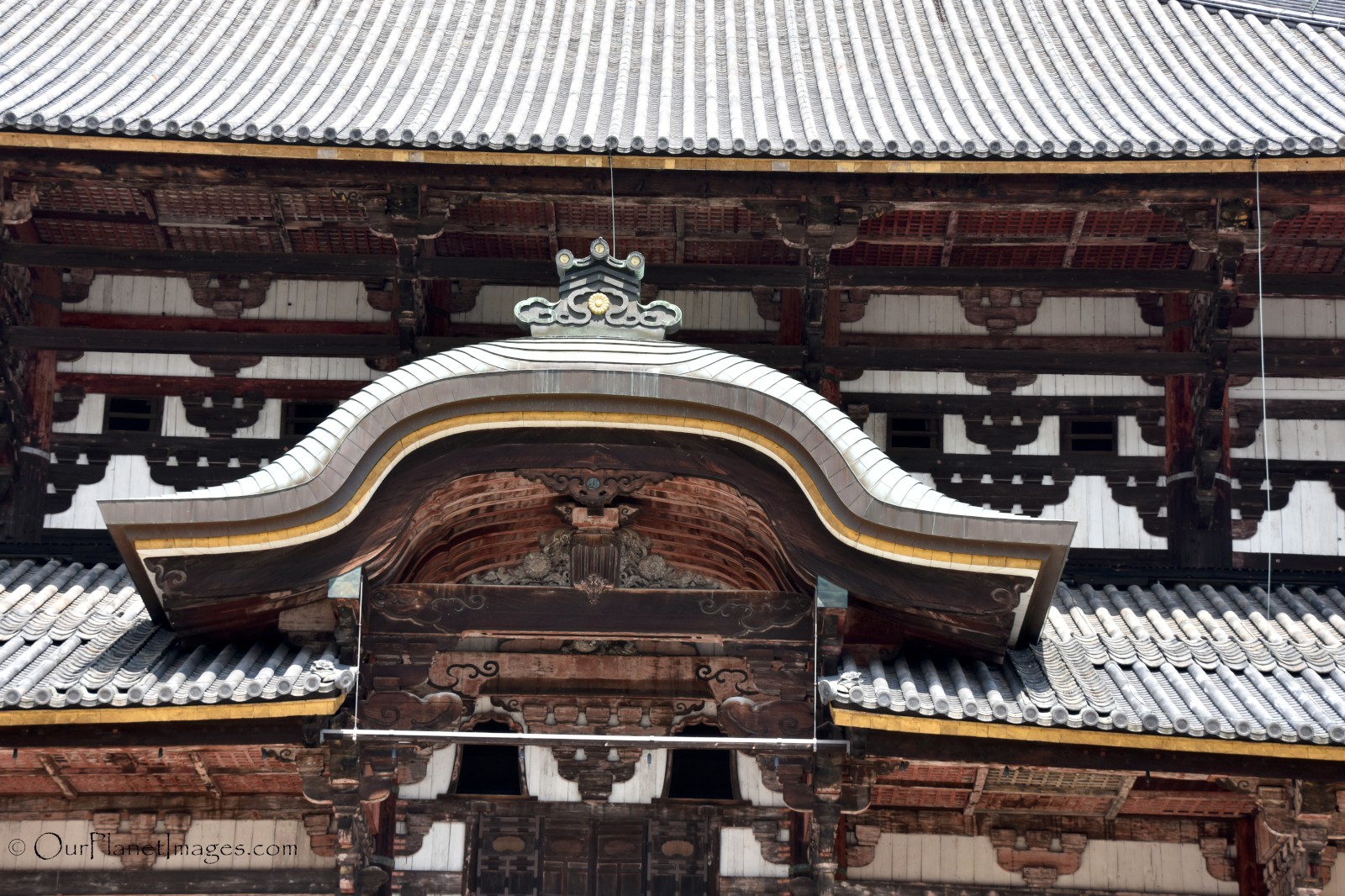
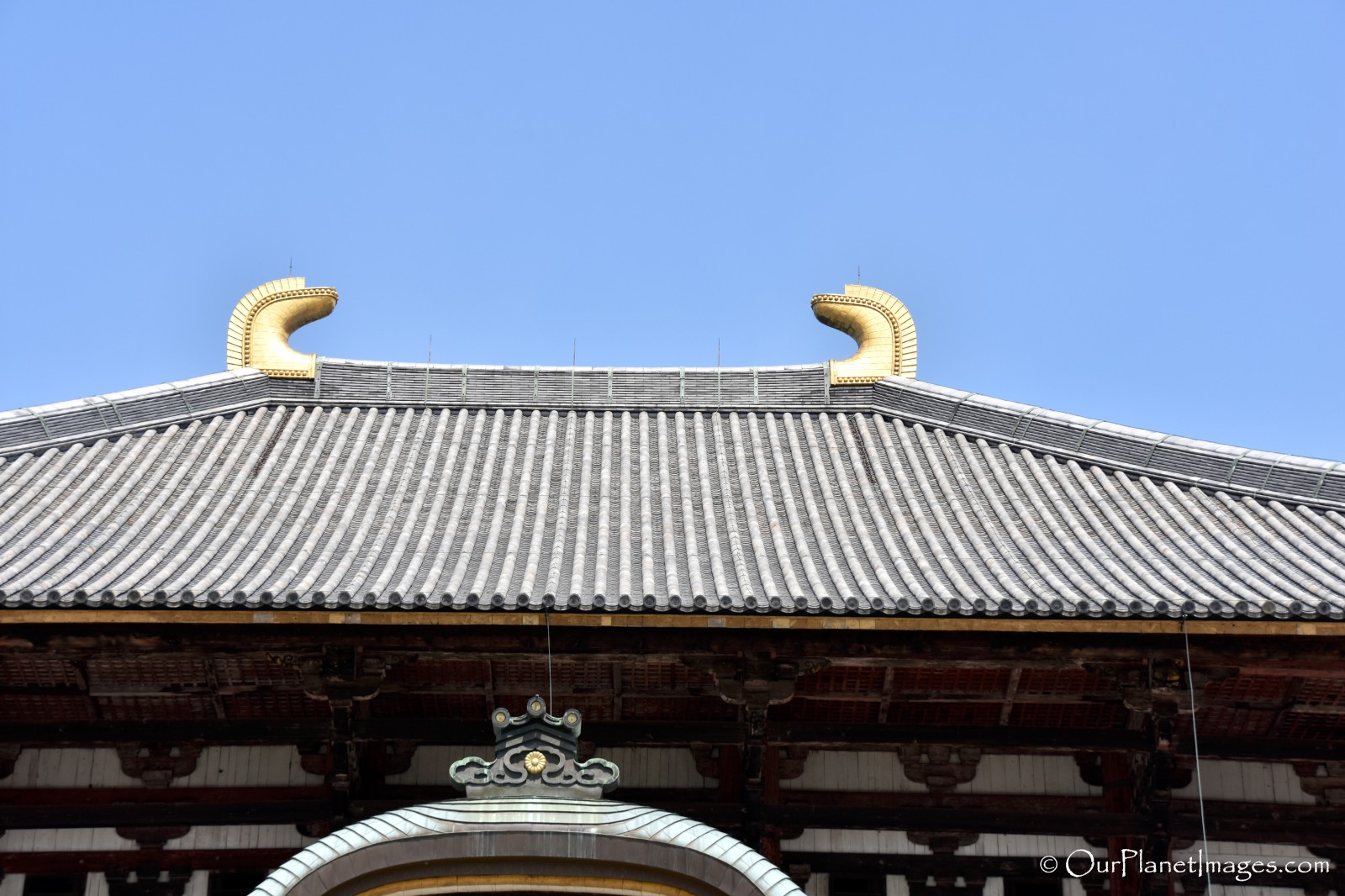


The main feature of the Great Buddha Hall is of course, the massive seated Bronze Buddha that is 49 feet tall and weighs 500 tons. The Buddha is seated with the palm of his right hand extended forward. This is one of the main five gestures of the hands in Buddha statues and means “fear not”.

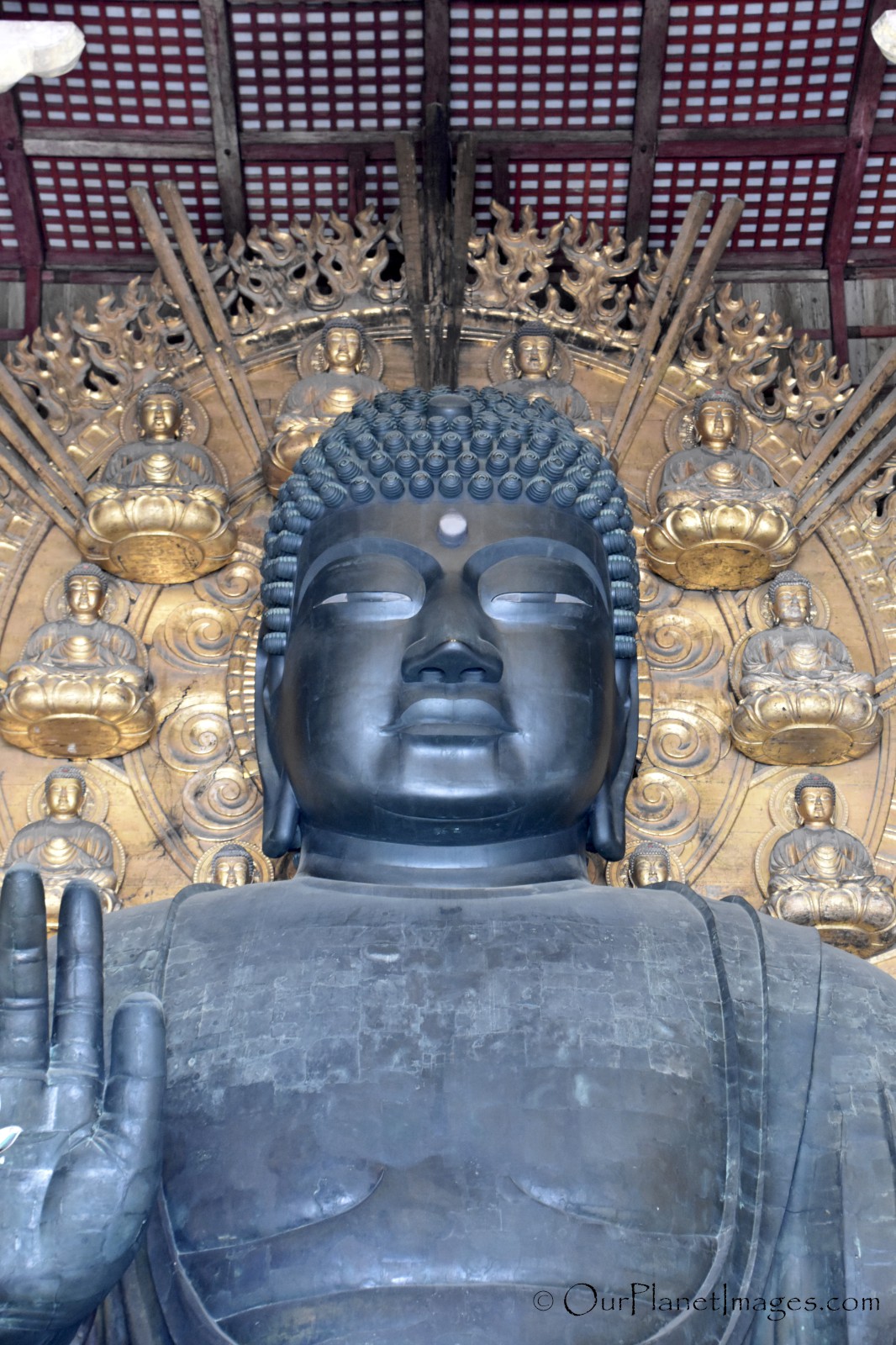
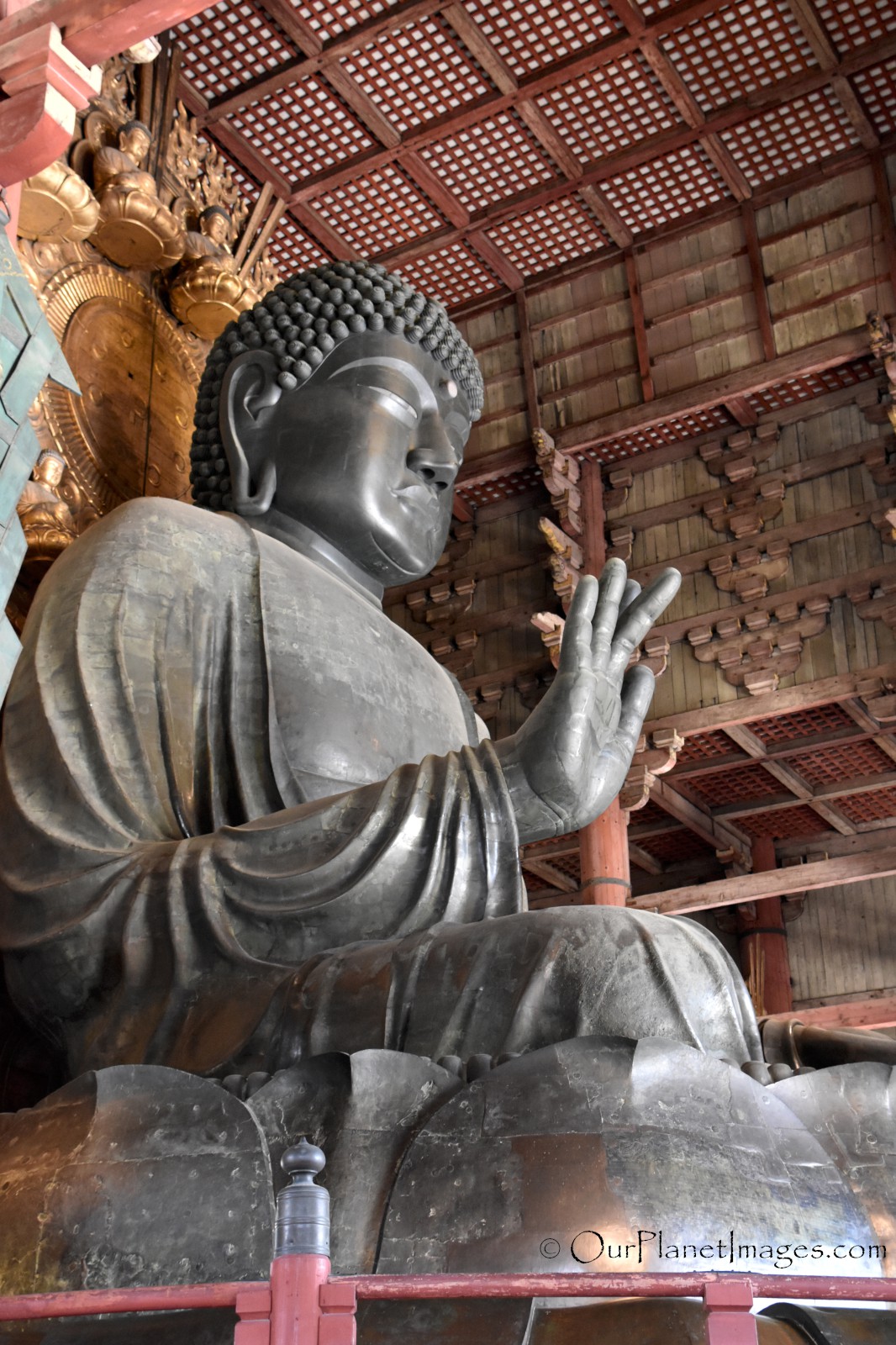
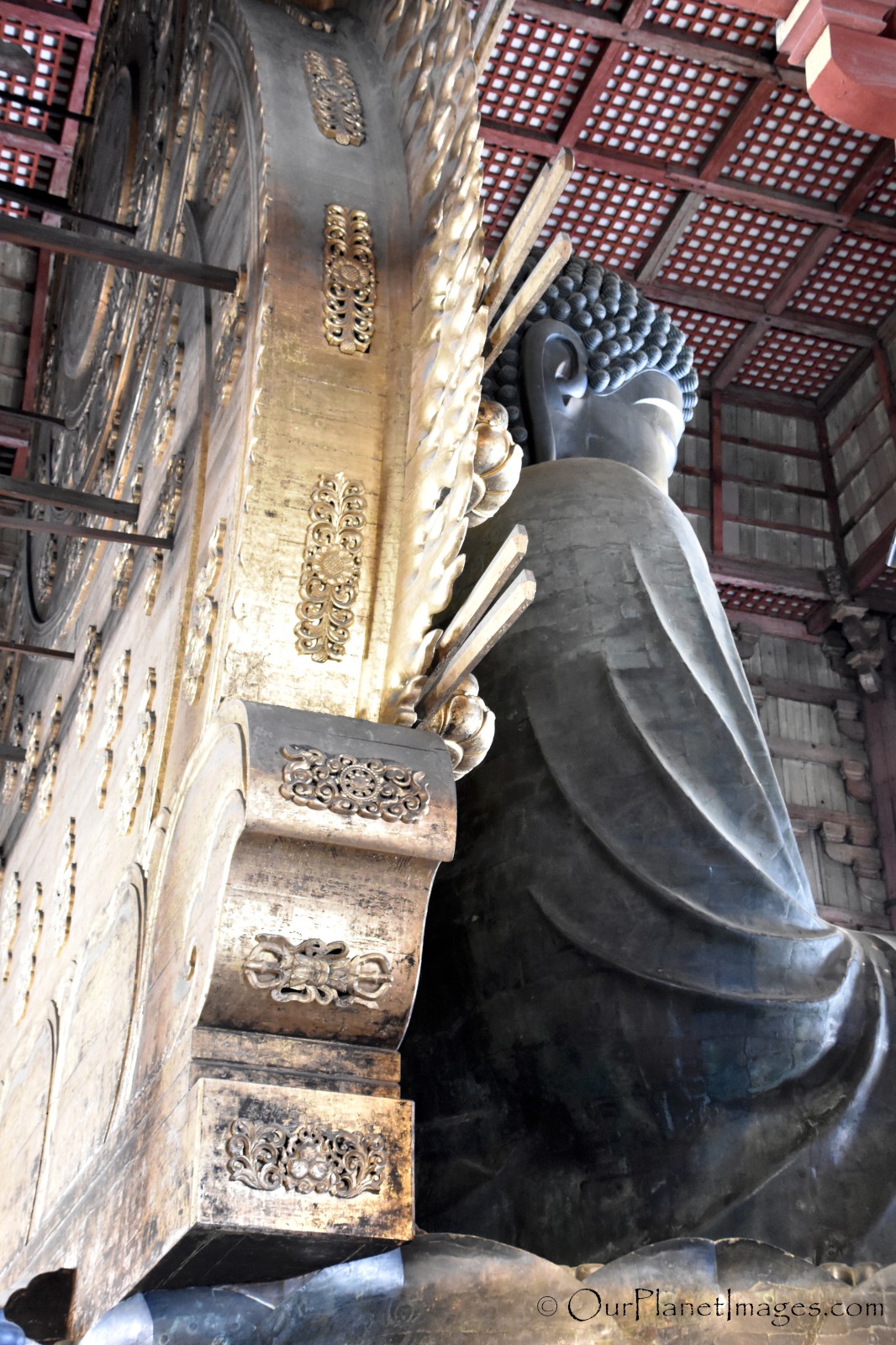
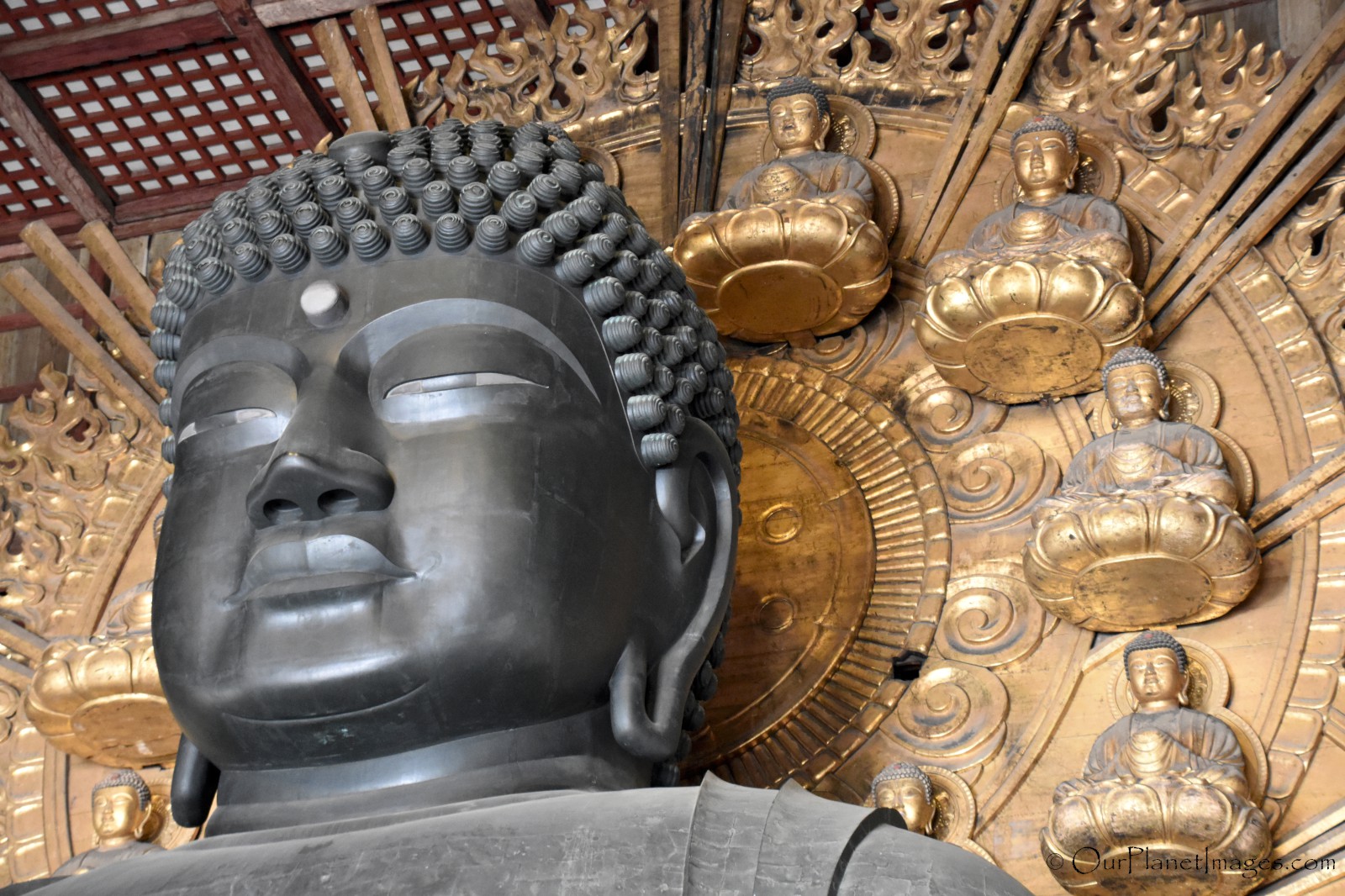
One of the features that I found interesting are the sixteen (16) small seated Buddhas surrounding the larger Buddha. Ten (10) circle the Buddha’s head and three (3) are on each side of the Buddha for a total of sixteen (16).
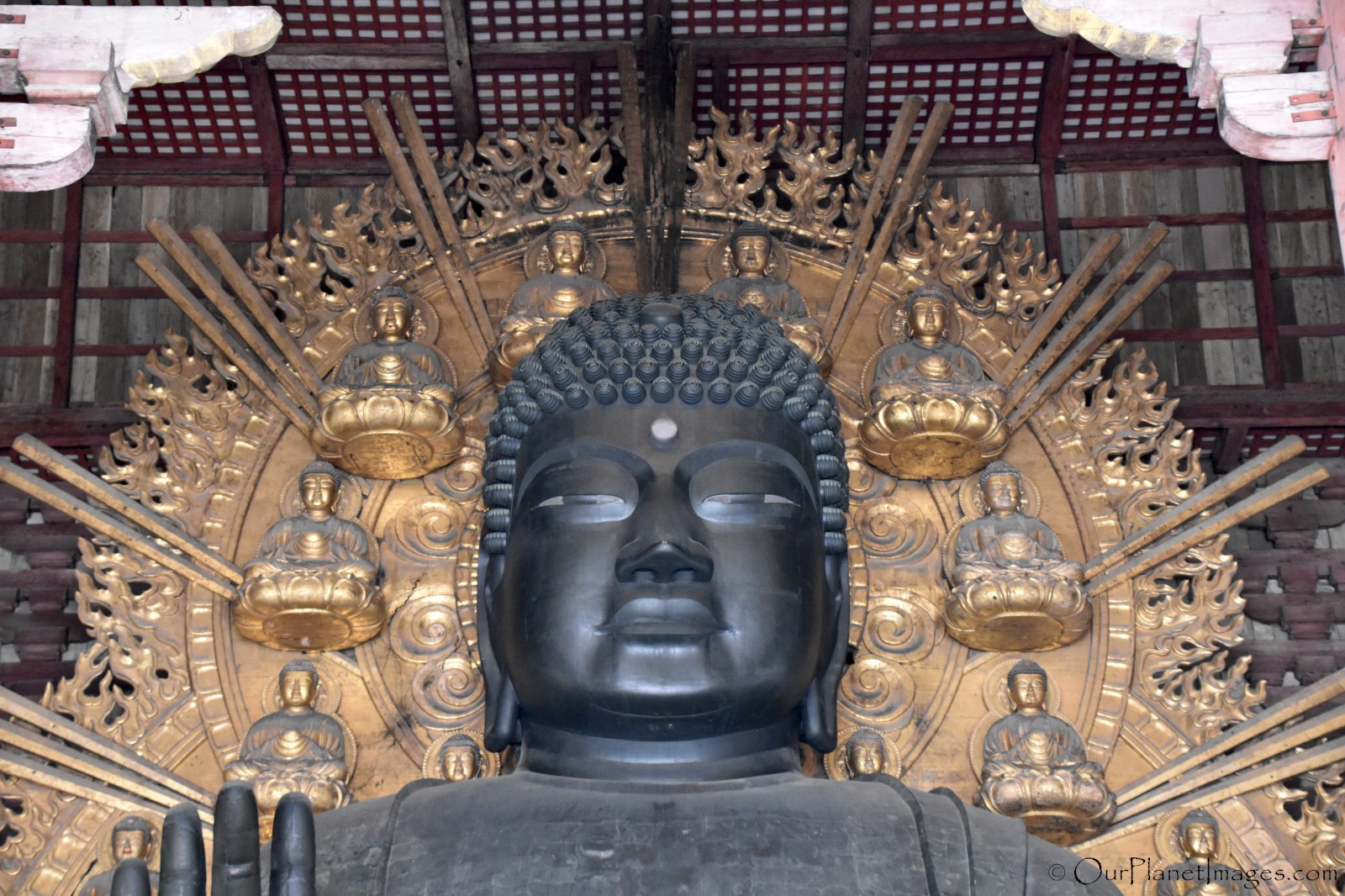

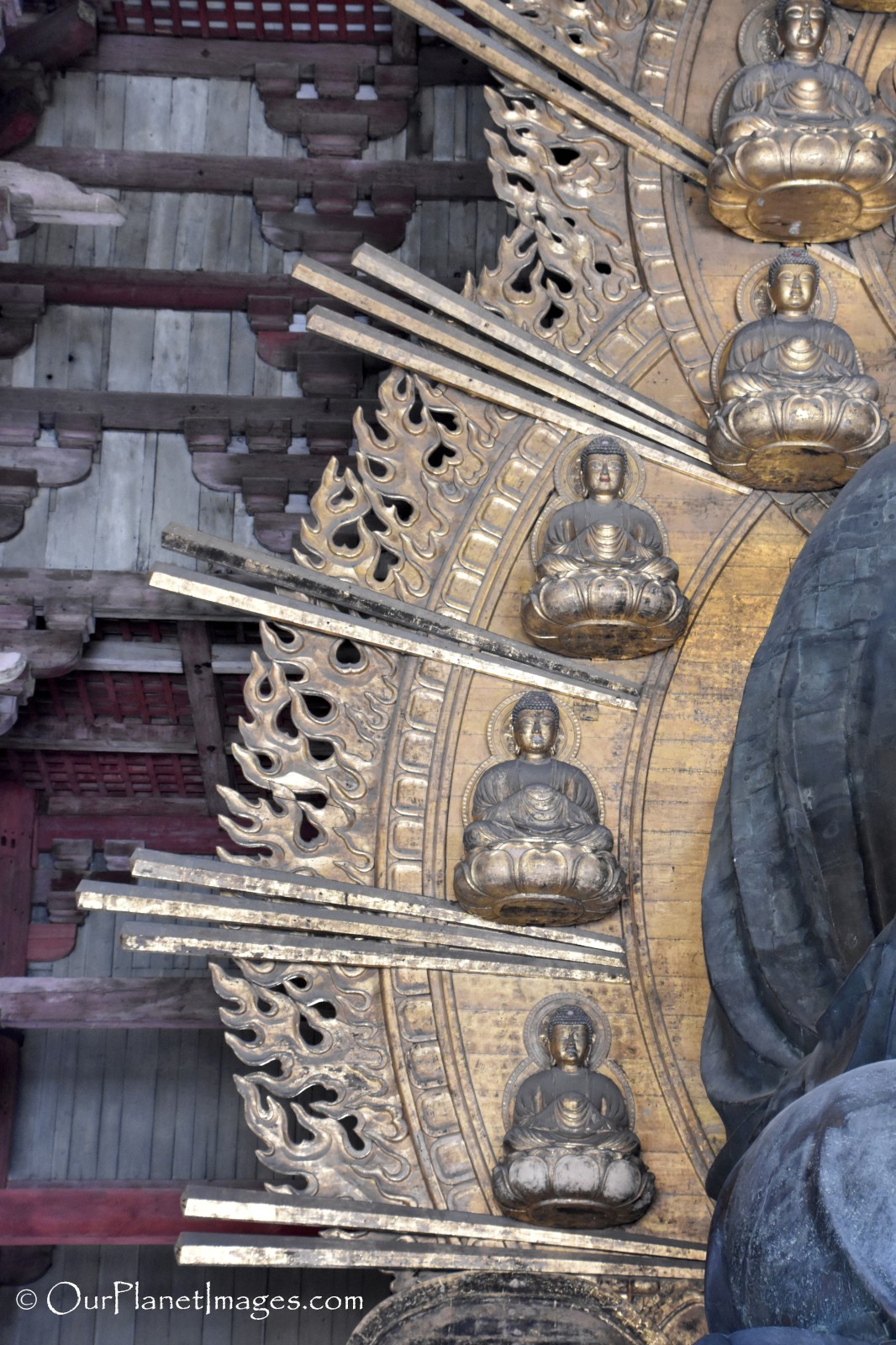
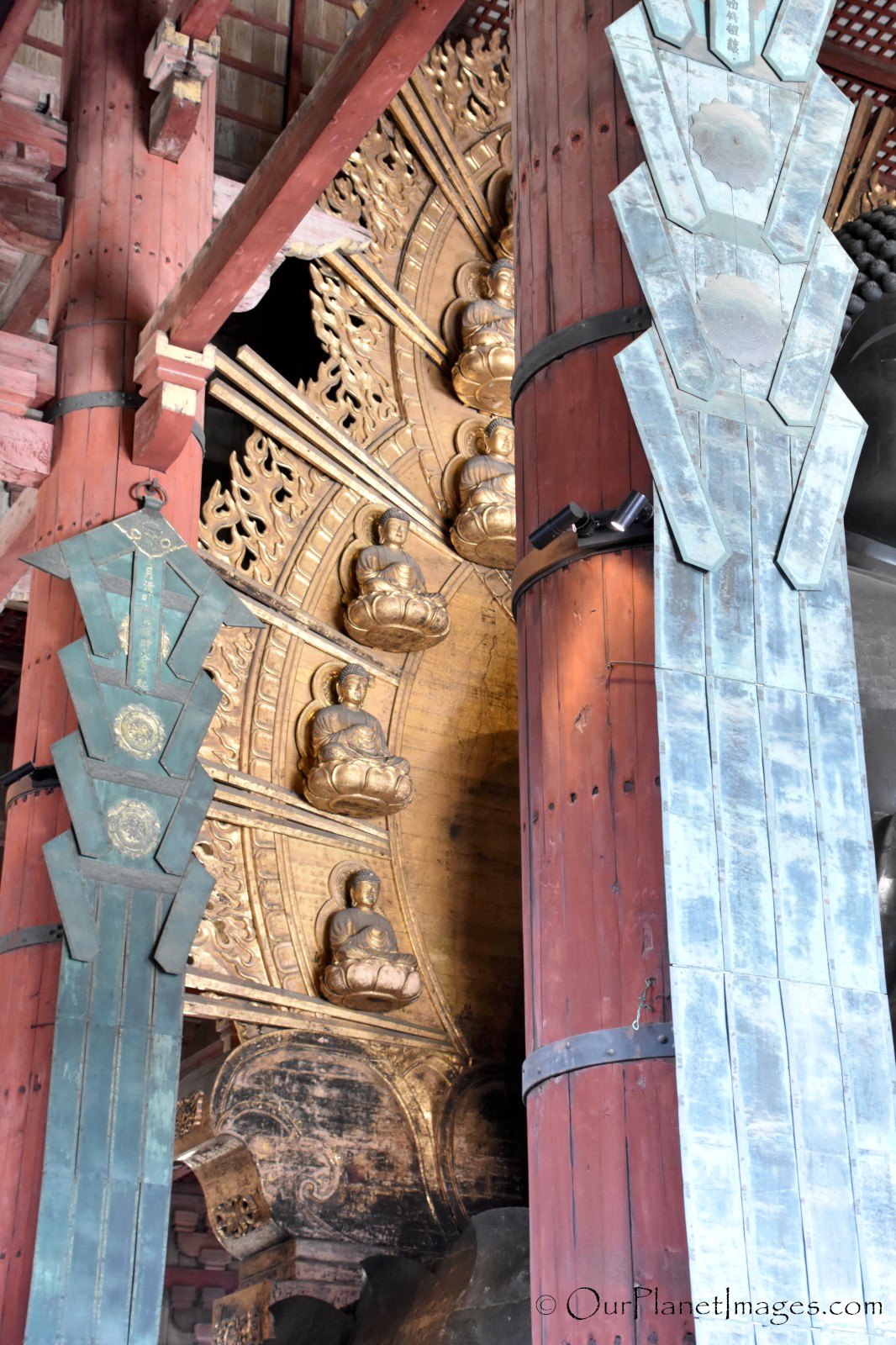
On each side and behind the Great Buddha is a bodhisattva. A bodhisattvas is a person who is on the path towards Buddhahood.
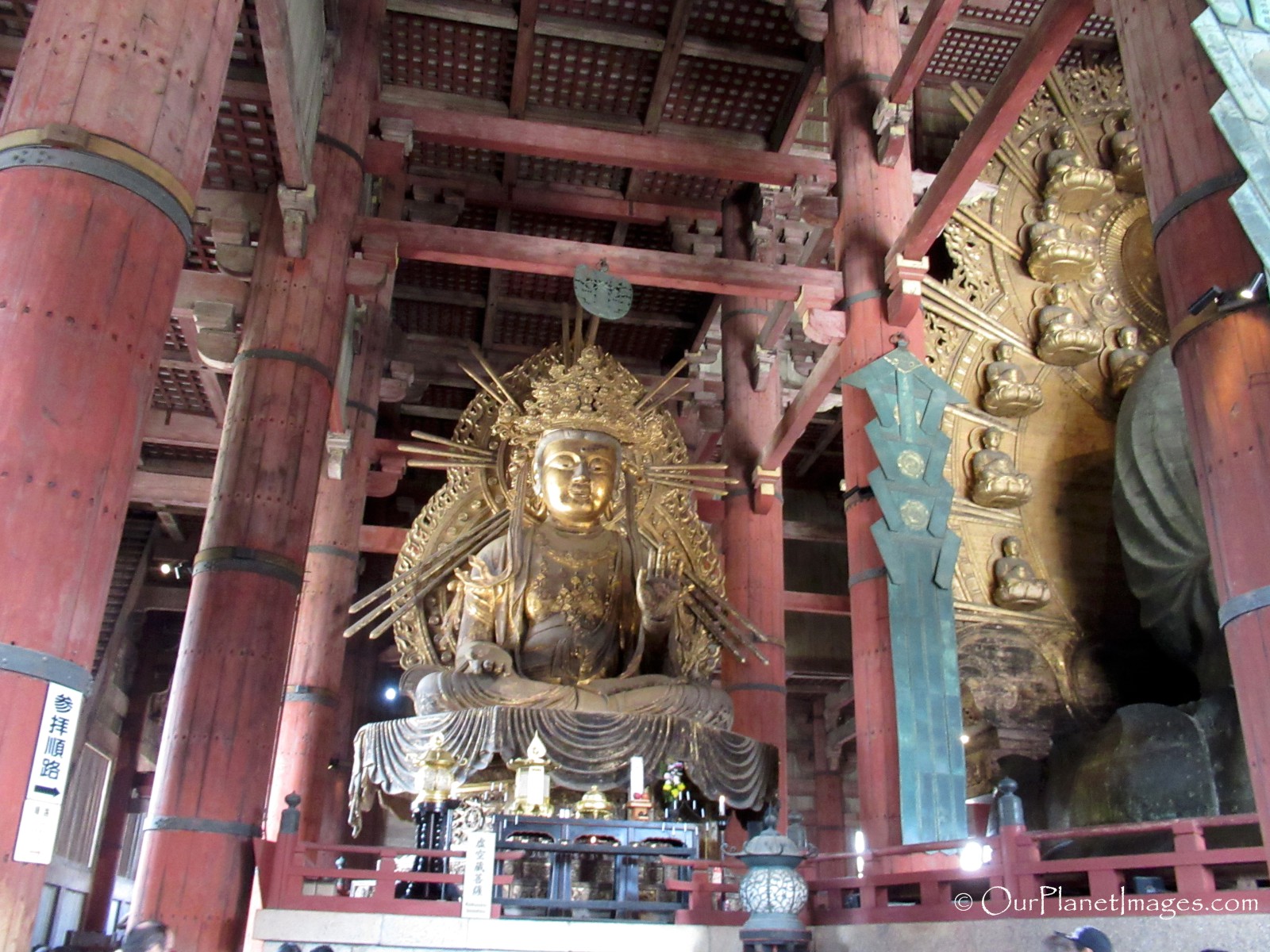
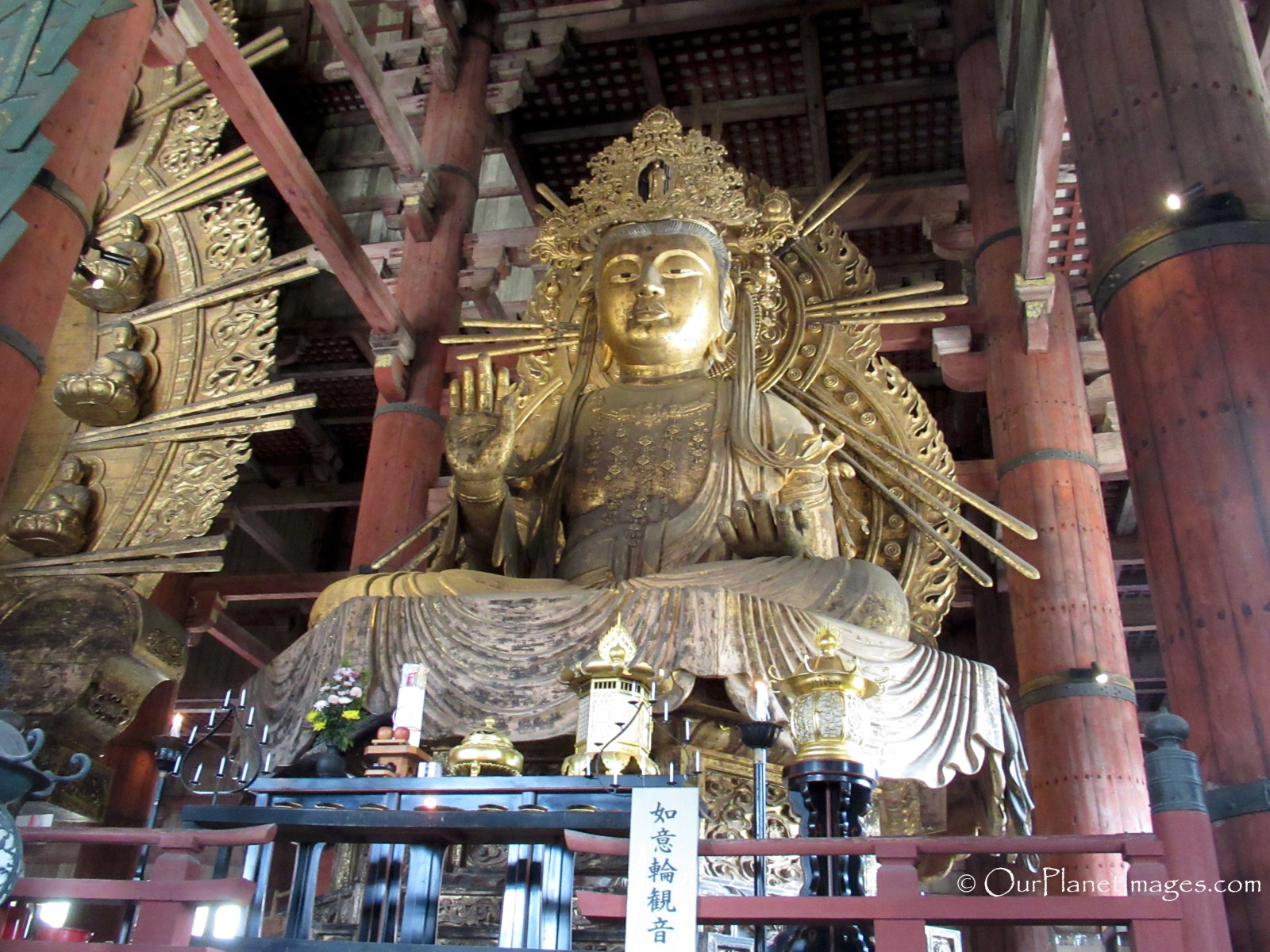
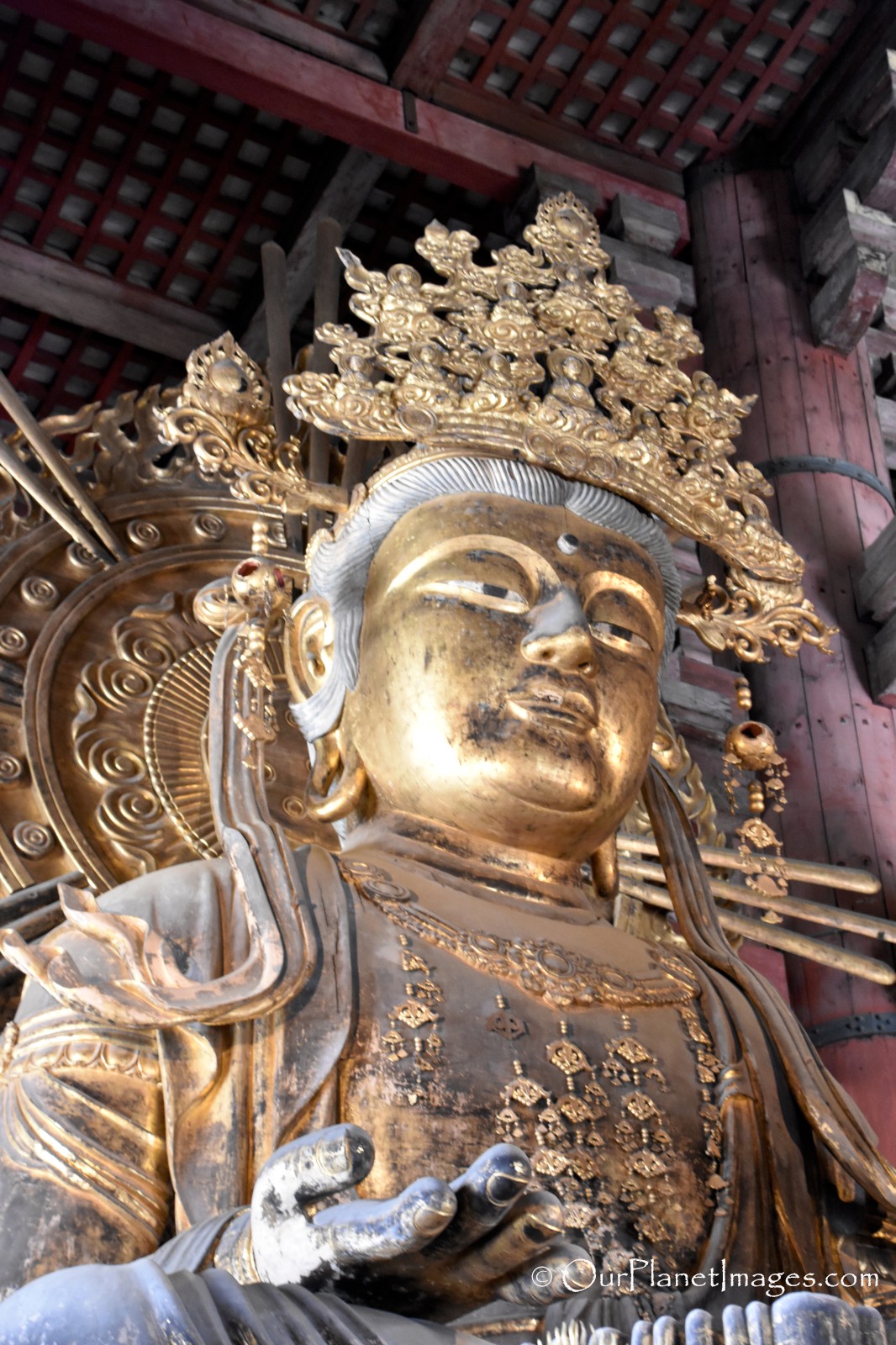
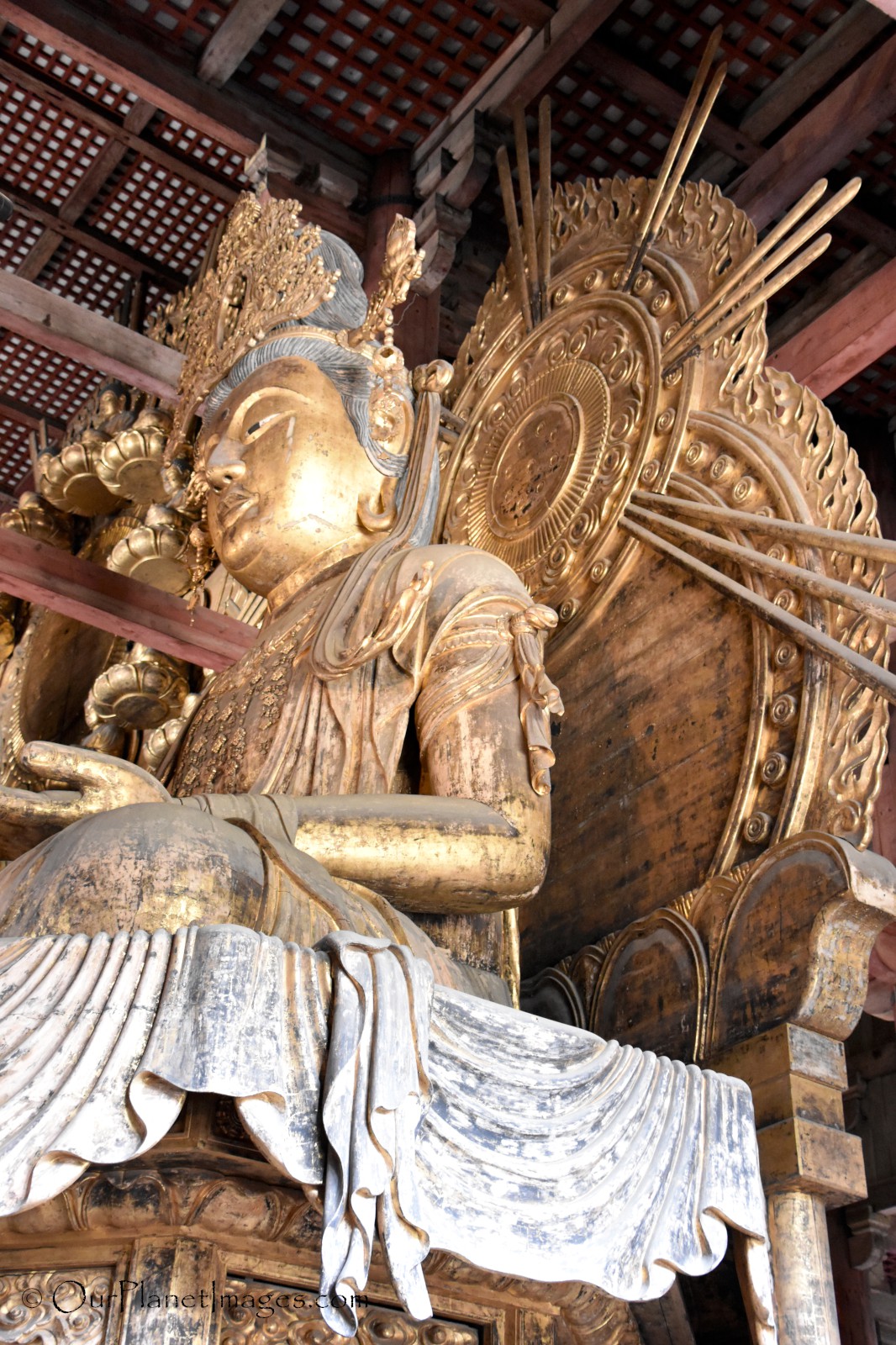
Other sculptures in the Great Buddha Hall are the Shitenno which are the Four Heavenly Kings in Buddhist faith. Each represents a direction, season and element. They are:
Jikokuten: East, Spring, Water, Strength
Zochoten: South, Summer, Fire, Prosperity
Komokuten: West, Fall, Metal, Awareness
Tamonten: North, Winter, Earth, Wealth
Pictured below are Komokuten holding the scroll and Tamonten.
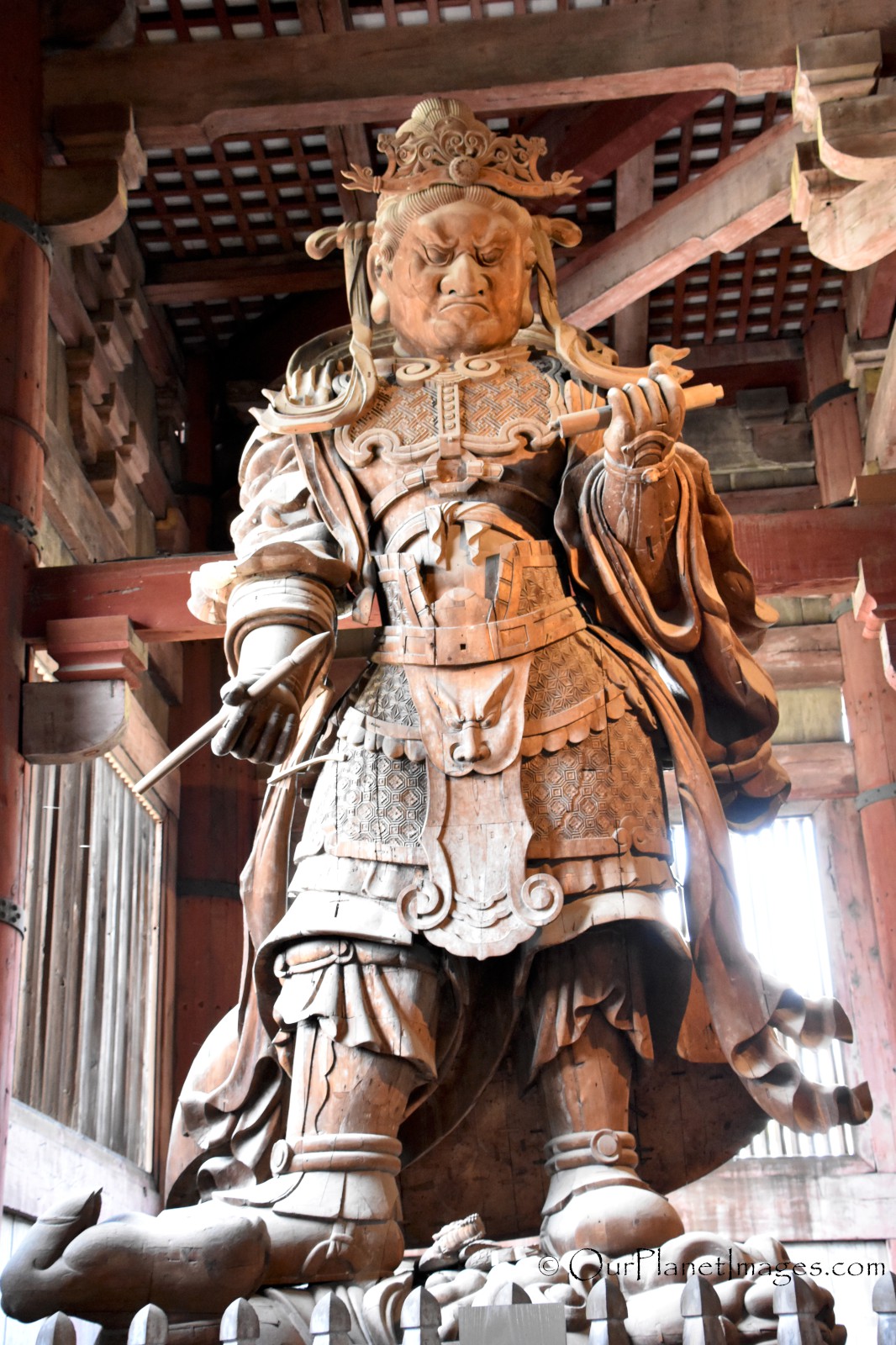
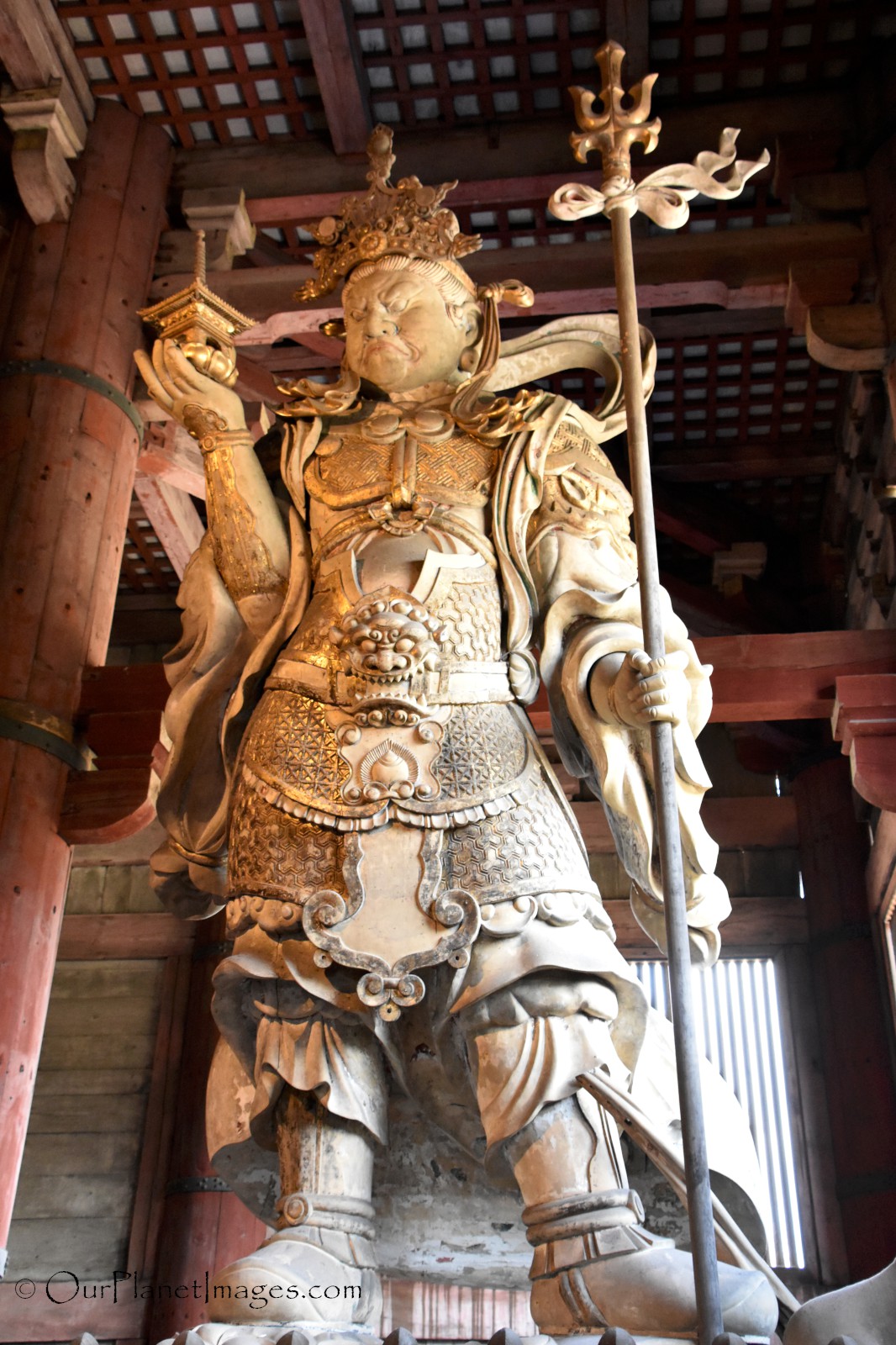
The Dust on My Shoes
Everything about the Todaiji Temple is large. Many times it is hard to communicate size in my photos but the Great Buddha Hall is massive, the seated Buddha is massive and the other sculptures are also very large. For prospective, look at the size of the people on the steps leading to the main hall in the photo below.

I am completely overwhelmed when I visit places like this. It is unimaginable to me that a building of this size could be constructed without the use of modern equipment. I have seen other ancient sites of different kinds and I always come away with the same feelings. Amazed and inspired!
It is amazing what people can accomplish when they have a strong enough desire!
Related Posts
